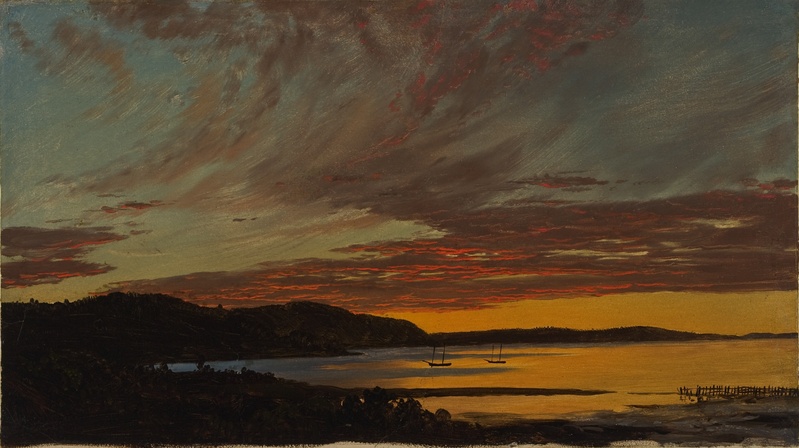When we think of Frederic Edwin Church, we think of large canvases that very nearly glow. A landscape painter, Church was closely associated with the Hudson River School, and many of his best-known works portray New York and other locales luminously.
His former home, Olana, in Hudson, N.Y., is now operated as a state museum. But the Connecticut-born Church had a long history in Maine as well. A new exhibition on the fourth floor of the Portland Museum of Art features two dozen small paintings and drawings that Church made in Maine.
“Olana was a better-known location for Church,” said PMA senior curator Susan Danly, “but Maine holds as strong a place in his imagination as did Olana.”
“Maine Sublime: Frederic Edwin Church’s Landscapes of Mount Desert and Mount Katahdin” explores the half-century that Church spent in the Pine Tree State. It’s on view through Sept. 30.
Church loved both locations in Maine, for different reasons. He arrived in Mount Desert on the coast in 1850, first by himself and later with large groups of people on summer vacations. That first visit, he spent six weeks.
Mount Desert was becoming a tourist destination, and Church delighted in his painted sketches of both people and the landscape, Danly said. But it was the landscape that stuck with him. He loved the rocky coast, the islands and the tranquil harbors.
Most of all, he loved the sunrises and sunsets. “The brilliant colors that he experienced out there began to affect him in interesting ways,” Danly said.
Church’s interpretation of the colors influenced his more famous later works and sustained his reputation as a painter of majestic, light-filled transcendent scenes.
Mount Katahdin offered something else that Church cherished: solitude and wilderness. He was influenced by the writings of Henry David Thoreau, particularly his essays about the Maine woods and Walden Pond. Church wanted the same experiences, and ventured north in the wilderness of Maine beginning in 1852.
“He was much more interested in the idea of being out in the wilderness and experiencing nature away from all the family experiences he had at Mount Desert,” Danly said.
Church eventually bought 400 acres on Millinocket Lake in 1878. It was the only other property besides his home in upstate New York that he owned.
“Maine Sublime” gives viewers a slice of Church’s career. These are mostly small panels that he carried with him while traveling. He made these paintings as sketches, although he presented them as finished works. He hung many of them at Olana, perhaps signifying their importance to him.
All of the work in the show is on loan from Olana, except for two paintings. One is from the PMA’s collection, and the other is on loan to the museum. Noted art historian John Wilmerding curated the exhibition, which will travel to Houston next year before returning home to Olana.
The Katahdin paintings feel different and more personal, Danly said.
The final paintings Church made in Maine is a view of Mount Katahdin from the lake. In it, he portrays a single man in a canoe, padding off into the distance. He made that painting in 1895, near the end of his life.
The solitary paddler was his farewell to a place he held dear to the end, Danly said.
“It was his final reminiscence.”
Staff Writer Bob Keyes can be contacted at 791-6457 or:
bkeyes@pressherald.com
Twitter: pphbkeyes
Send questions/comments to the editors.




